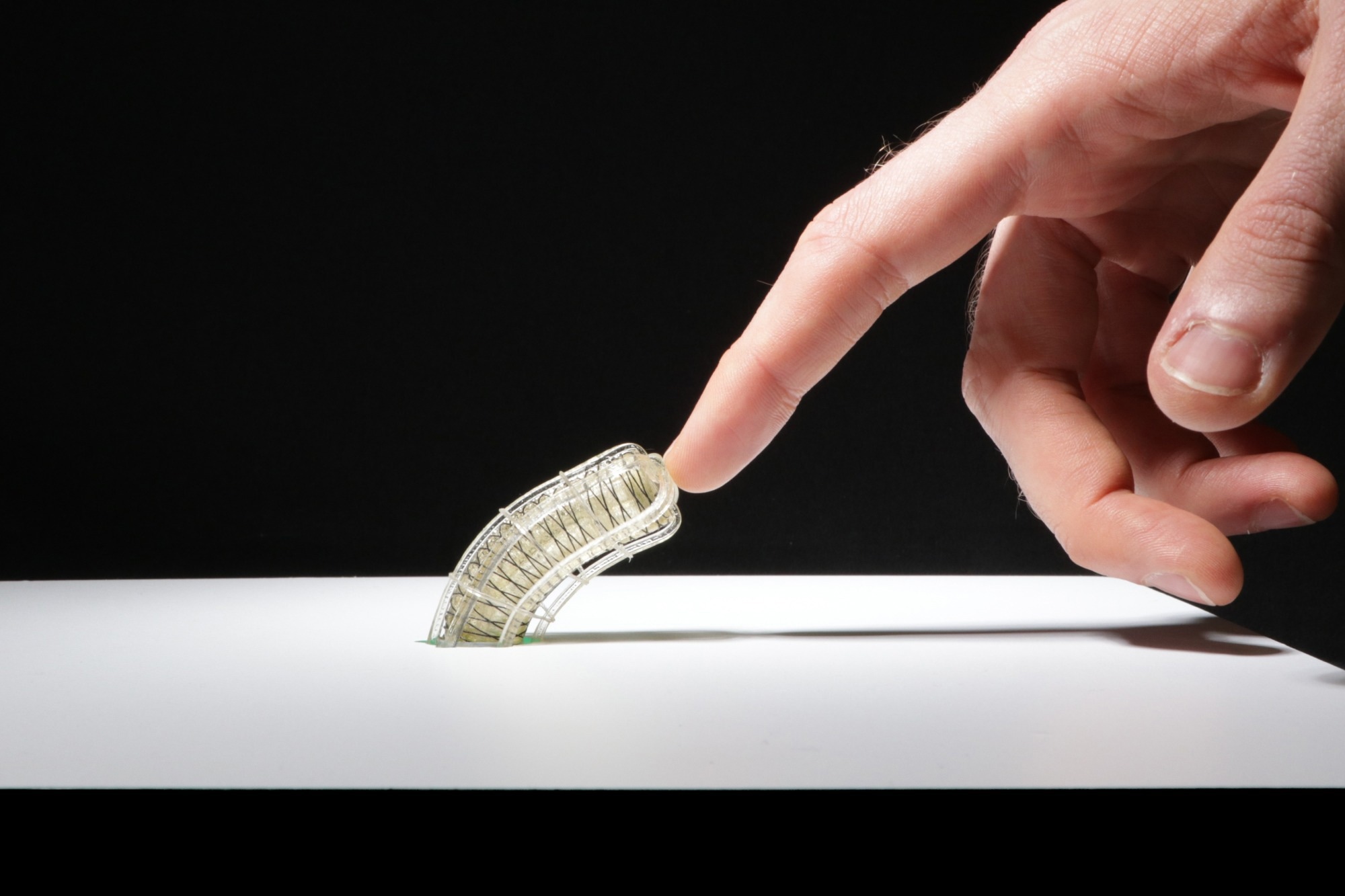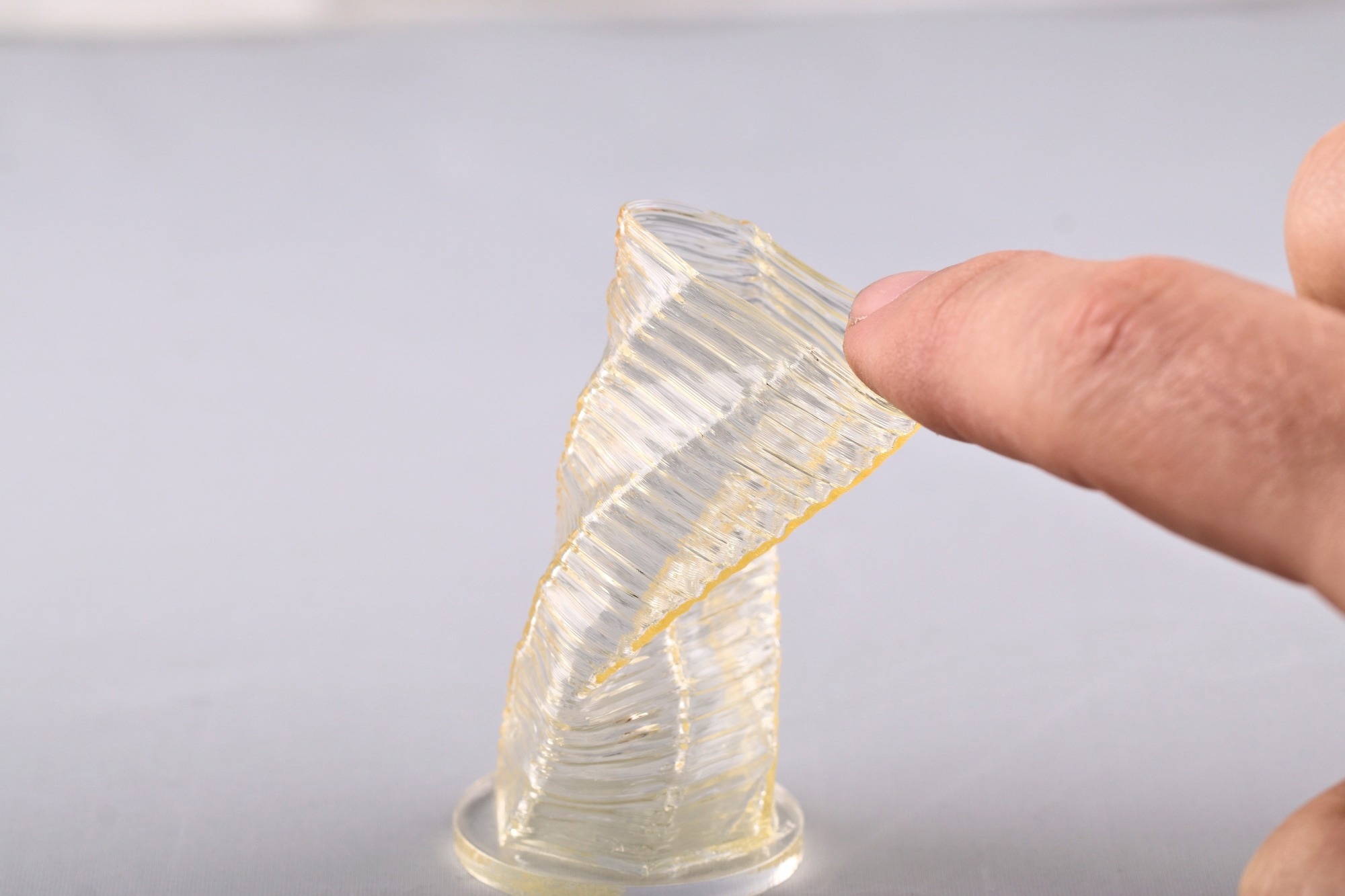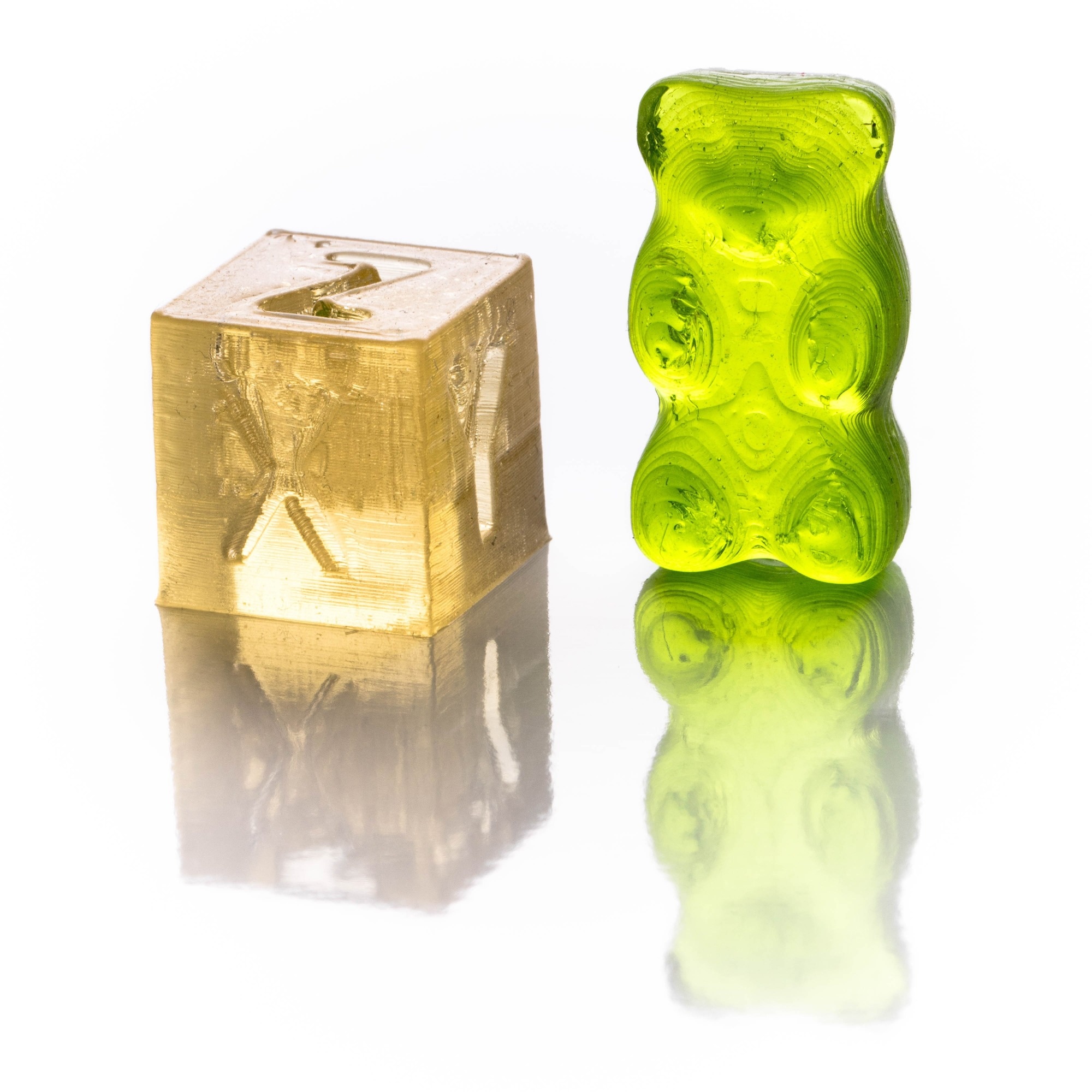New and rapidly changing technologies contribute to increasing amounts of tech waste, accumulating to as much as over 100,000 tons per day in 2019. That is the combined mass of almost 14 Eiffel Towers. Polymer products, in particular, end up in our ecosystem, polluting even the most remote areas on our planet.
Nature is a great source of inspiration for soft robotics. What natural phenomenon inspired your research into the development of a 3D-printing process that utilizes a biodegradable biogel?
In our lab, we soon realized that despite soft robotics being largely inspired by nature and its soft critters, an inherent “feature” of nature’s creations was missing: biodegradability. Once a soft robot has reached its end of life, there is often no simple solution to recycle its components or treat waste in an environmentally friendly manner. By extending the fabrication of our biodegradable gels to 3D printing, we can produce versatile soft actuators in various complex shapes and even include integrated sensor networks that enable them to interact with their environment. Once they are no longer of use, they can be simply disposed of, or even eaten, as all the materials used are also edible.
Can you provide an overview of the Fused Deposition Modeling (FDM) method you used to sustainably produce soft robotic actuators with integrated sensor networks?
Nowadays, Fused Deposition Modeling (FDM) is one of the most common 3D printing methods. Our process uses a Biogel reservoir in a medical syringe, which is heated above the gel's melting temperature. Similar to a syringe pump, our device then squeezes the liquid biogel through a heated nozzle which leads to the deposition of a biogel “thread” that solidifies quickly after the extrusion.

Image Credit: Andreas Heiden
In this manner, several two-dimensional layers are drawn subsequently and stacked on top of each other to form the three-dimensional object.
How did you go about producing your green biogel, and what specific properties does it attain?
The biogel was already developed by our group, which we published in Nature Materials. The aim was to engineer bioderived materials such as gels based on the biopolymer gelatin that can match the performance of conventional synthetic elastomers yet degrade fully after their intended use – leaving essentially no trace of having existed.

Image Credit: Andreas Heiden
About a year ago, we optimized such gels to be of use in soft electronic patches and for soft robots. It is highly stretchable and elastic, and its thermoreversability makes it reusable and perfectly suitable for 3D printing. Based on naturally occurring materials as degradable building blocks that are durable, self-adhering, stretchable, mechanically tunable and healable, it is a broadly applicable gelatin-based biogel that unites the challenging needs of resilient yet sustainable (soft) robots and electronics in a single platform.
What makes this 3D-printed biogel actuator environmentally friendly?
The main structure of our actuator, including the fiber reinforcement and waveguides, is entirely biodegradable. Additionally, the biogels’ water solubility enables a simple method to separate the robot from its non-biodegradable control parts, allowing their reuse.
Alongside this eco-friendly fabrication approach using biodegradable materials, we introduced an additional reuse cycle where the biogel is reprinted up to 5 times, maintaining more than 70% of the initial performance metrics.
After the actuator has fulfilled its designated purpose and is no longer of use, it can be disposed of. Immersing it in water triggers the swelling and dissolution of the biogel and, in the presence of enzymes, complete decomposition. The undissolved parts (e.g., air inlet tubes or cotton threads) can thus be simply taken out and reused or disposed of separately. Alternatively, the coated biogel can readily be recycled after the removal of the additional components to create a new generation of sustainable devices.
How did you assess the efficacy of your material, and what were the results?
Despite being entirely degradable when disposed of in wastewater, our gels maintain their mechanical properties for more than one year under ambient conditions and enable soft actuators that operate for more than 330,000 cycles without failure. We tested this by performing tensile tests in many different ways and under continuous cyclic loading. In this manner, we also determined parameters like the elastic properties, the resilience and the drying behavior.
The material is stretchable to more than 500% of its original length, which enables pneumatically driven actuators with response times of less than one second and high bending angles up to 74 degrees. Despite the material’s water solubility, equipped with a biodegradable shellac coating, such actuators can also operate underwater for about 1.5 hours and more than 1500 actuation cycles before failure.
How does this printed biogel compare to mold cast manufactured biogels?
Biogels that are processed by conventional molding techniques only yield objects of limited geometry and feature size. This constrains their applicability, as their locomotion is often reduced to a single predefined pattern, and limited rudimentary sensing capabilities are implemented.
The controlled printing process allows finer features and fabrication of multi-degree of freedom (DOF) actuators with soft sensors while, at the same time, increasing the material’s stretchability by about 140%, which is essential for reliable soft robotic devices. Mold-free fabrication and material reusability also speed up prototyping and reduce waste generation.
Did you come across any challenges during your research, and if so, how did you overcome them?
The biggest challenge was finding the correct printing parameters that account for a stable three-dimensional print. Besides the gels temperature and the temperature and airflow of the cooling system, there are parameters like printing speed, extrusion rate, cooling time per layer, etc. All those parameters need to be controlled precisely, and some of them affect each other, which makes it tricky to find the correct settings.
What are the potential applications of this novel technology?
We applied our approach to create a new set of durable biodegradable soft actuators and autonomous electronic platforms with multimodal sensing capabilities. Future Multi-material printing strategies will enable combinations of mechanically, electrically and optically tuned biogels to achieve actuation mechanisms beyond pneumatic control and enhance sensing and control capabilities for highly integrated robots.
Possible applications range from edible robotics, produce harvesting or animal behavior studies to single-use scenarios in hazardous environments or medical settings, in which tools and healthcare devices are commonly disposed of after their employment to meet stringent hygiene requirements.

Image Credit: Andreas Heiden
What impact will such a novel technology have on both the environment and industry?
Alongside the added technical improvements, end-of-life considerations are critical for future sustainable development. The presented accessible, sustainable and cost-effective fabrication strategy will likely have a positive impact on soft and collaborative robotics through a reduced ecological footprint.
Scalable production, low material costs and safety of all the fabrication steps will enable widespread employment, from industry and healthcare to education.
What are the next steps for your research?
Increasing the level of complexity will also require more advanced actuator shapes and multi-material combinations. So far, the biogels viscosity and cooling time hinder the printing of overhanging features or cavities. Developing suitable biodegradable support materials will solve these issues in combination with multi-material printing. Moreover, implementing multi-material printing will enable combinations of mechanically, electrically, and optically tuned biogels to achieve actuation mechanisms beyond pneumatic control and enhance sensing and control capabilities for highly integrated robots.
About Andreas Heiden
 Andreas Heiden is currently a Ph.D. student at the Institute of Soft Matter Physics of Johannes Kepler University (JKU), Linz – Austria. He received his master degree at JKU in 2020 and his bachelors degree akt JKU in 2017. His research interests include developing sustainable soft robotic devices, materials research and conceptuation and design of alternative fabrication strategies. His research was published in the Science Robotics Journal.
Andreas Heiden is currently a Ph.D. student at the Institute of Soft Matter Physics of Johannes Kepler University (JKU), Linz – Austria. He received his master degree at JKU in 2020 and his bachelors degree akt JKU in 2017. His research interests include developing sustainable soft robotic devices, materials research and conceptuation and design of alternative fabrication strategies. His research was published in the Science Robotics Journal.
Disclaimer: The views expressed here are those of the interviewee and do not necessarily represent the views of AZoM.com Limited (T/A) AZoNetwork, the owner and operator of this website. This disclaimer forms part of the Terms and Conditions of use of this website.